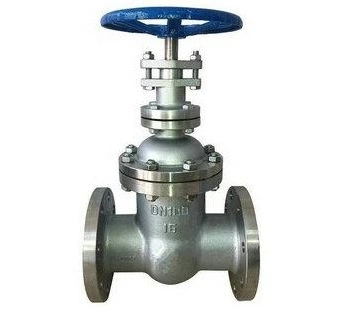Sealing face on valve is used to cut off, connect, regulate, distribute, separate and blend media. So, sealing face is usually corroded, eroded and wore by media and is damaged easily.
Reasons damaging sealing face of valve is divided into artificial damage and natural damage. Artificial damage is caused by culpable design, inaccurate manufacturing, improper materials choosing, inappropriate installation, unsuitable utilization and ineffective repairing. Natural damage refers to that abrasion under the situation that valve works normally. The damage is caused by inevitable corrosion and washout of media to sealing face.
Reasons of causing damage on sealing face of valve can be summed up in following categories.
Poor processing quality of sealing face
Poor processing quality is shown by the defects such as cracks, pores and ballasts on sealing face, which are caused by inappropriate bead welding and surface treatment choosing and undesirable operation during bead welding and surface treatment. Over high or low hardness on sealing face is attributed to incorrect materials selection and inappropriate hot treatment. Non corrosion resistance and uneven hardness on sealing face are resulted in by metal at based which is blown to sealing face, diluting alloy compositions of sealing face. Certainly, design problems also exist.
Damage caused by improper type choosing and undesirable operation
The damage is mainly shown that the valve is not chosen according to working conditions.
Globe valve is used as throttle valve, resulting in overlarge closing specific pressure, too fast closing and tender closing, making sealing face suffer from washout and abrasion.
Unsuitable installation and ineffective repairing result in sealing face working abnormally. The valve operates with obstacles, damaging sealing face untimely.
Chemical corrosion of media
Under the situation that media around sealing face do not generate electric current, media directly act with sealing face chemically, corroding sealing face.
Electrochemical corrosion
Reasons such as sealing faces contacting with each other, sealing face contacting with closure member and body, differential concentration and oxygen concentration of media can cause potential difference, then, electrochemical corrosion is occurred, resulting in positive pole sealing face being corroded.
Washout of media
It is the result that sealing face is wear, washed and cavitation eroded when media flowing. In a definite speed, floating refined particles hit sealing face, causing partial damage. Highly flowing media directly wash sealing face, which also causes partial. When media mixed flow and evaporate partially, caused vesicles dynamite and hit sealing face, causing partial damage. Alternating action of washout and chemical corrosion of media strongly erode sealing face.
Mechanical damage
Damage such as bruise, impact and squeeze can occur during sealing face on-off. Atoms permeating each other occur between two sealing faces under high temperature and high pressure, then, adhesion is caused. When two sealing faces move each other, adhesion is pulled or torn easily. The higher roughness on sealing face is, the phenomenon is more easily caused. When valve is closed, the disc may impact and squeeze sealing face during back to the seat, causing partial abrasion and indentation on sealing face.
Fatigue damage
When sealing face is used for a long term, the sealing face causes fatigue, cracks and falling off under the action of alternating load. Aging is also caused when rubber and plastic have been used for a long term which weakens performance.
From the reasons of damaging sealing face, to improve quality and service life of sealing face, suitable sealing face materials, rational sealing structure and processing methods must be chosen.
